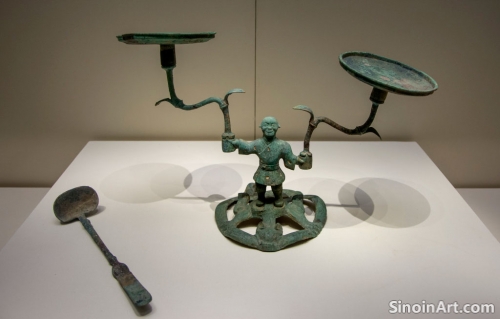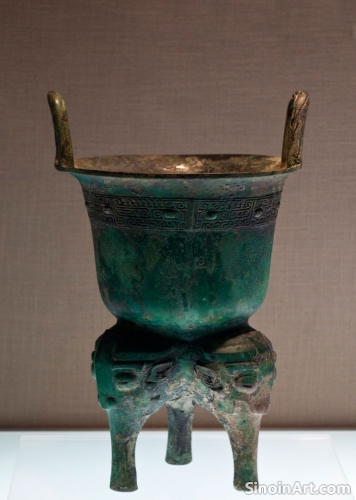Bronze Ware and Ancient Chinese Philosophy: Exploring the Connection Between Material Culture and Intellectual Thought
|
Beyond their practical use and symbolic power, bronze artifacts also served as a medium for conveying and exploring philosophical ideas in ancient China, often reflecting the values, principles, and underlying worldviews of Confucianism, Daoism, and other schools of thought. The blending of artistic creation and philosophical beliefs helped to create a unique form of cultural expression. The interplay between art and philosophy helped to shape both the intellectual and artistic traditions of the ancient world.  Confucianism, with its emphasis on ritual, social hierarchy, and moral order, is often reflected in the forms and designs of bronze vessels that were used in ancestral rites and state ceremonies. The design principles reflect the importance of order and harmony that was a key aspect of Confucian thought. The integration of ritual practice and philosophical principles was central to many areas of ancient Chinese life.  Daoist philosophy, with its focus on naturalness, spontaneity, and harmony with the cosmos, also influenced bronze production, resulting in objects that often emphasized flowing lines, simple forms, and organic motifs. The influence of Daoism led to a new visual vocabulary for artistic expression. The emphasis on nature and the natural world is a hallmark of Daoist thought.  Legalism, with its emphasis on law, order, and the authority of the state, was often reflected in bronze inscriptions and the creation of instruments that were used to enforce legal practices. The combination of both the written word and the visual symbolism was a key element in the application of power. The interplay between law and art highlights the importance of both in ancient Chinese culture. The study of bronze ware through the lens of ancient Chinese philosophy helps to reveal the complex relationship between material culture, intellectual thought, and social organization. The bronze artifacts help to illuminate the thought and philosophical traditions of the time. The care with which these objects were created reflects the care and planning that were applied to the understanding of the world itself. |
Tag : bronze philosophy, Confucianism, Daoism, Legalism, Chinese thought
Related information
- The Influence of Tang Dynasty Culture on the Design and Decoration of Bronze Ware
- The Use of Bronze in Ancient Chinese Agriculture: Tools and Innovations
- The Influence of Bronze Ware on Ancient Chinese Music Theory and Practice
- The Use of Bronze in Ancient Chinese Medicine: Exploring the Relationship Between Materials and Healing
- The Enduring Allure of Chinese Bronze Ware: A Source of Inspiration and Study
This article explores the influence of Tang Dynasty culture on bronze ware, highlighting new forms, decorative techniques, and their shift toward more refined and elegant designs that reflect the style of the period, and its focus on elegance and beauty.
This article explores the use of bronze in ancient Chinese agriculture, highlighting the types of tools and implements used, its role in enhancing agricultural productivity, and its impact on the development of ancient Chinese society.
This article explores the influence of bronze ware on ancient Chinese music theory and practice, highlighting the role of bronze instruments like bells and chimes in shaping musical scales, performance styles, and the spiritual aspects of music.
This article explores the use of bronze in ancient Chinese medicine, highlighting the belief that the material itself possessed healing properties, and how it was used in creating vessels for preparing remedies, and in some therapeutic practices.
This article reflects on the enduring allure of Chinese bronze ware, highlighting its technical skill, artistic beauty, historical significance, and the importance of its study and preservation for future generations.